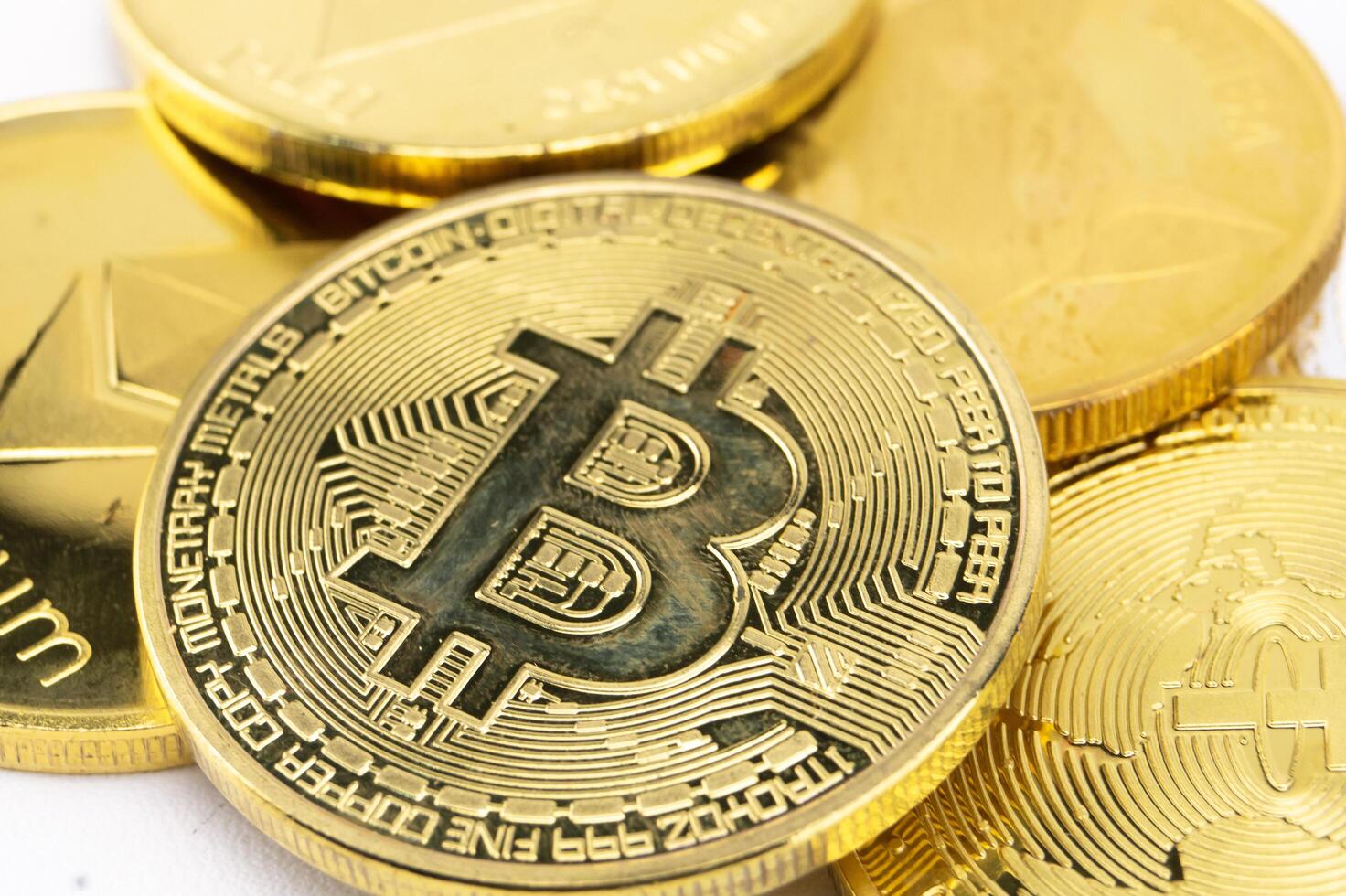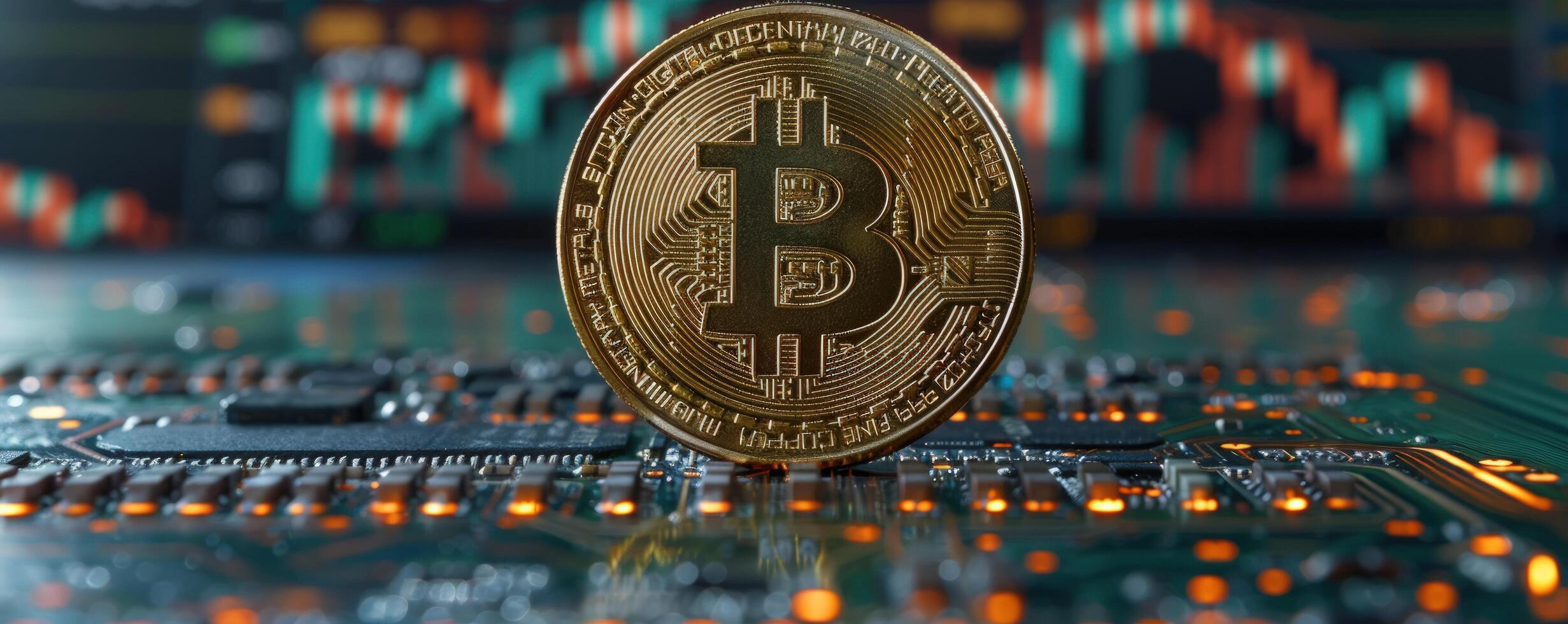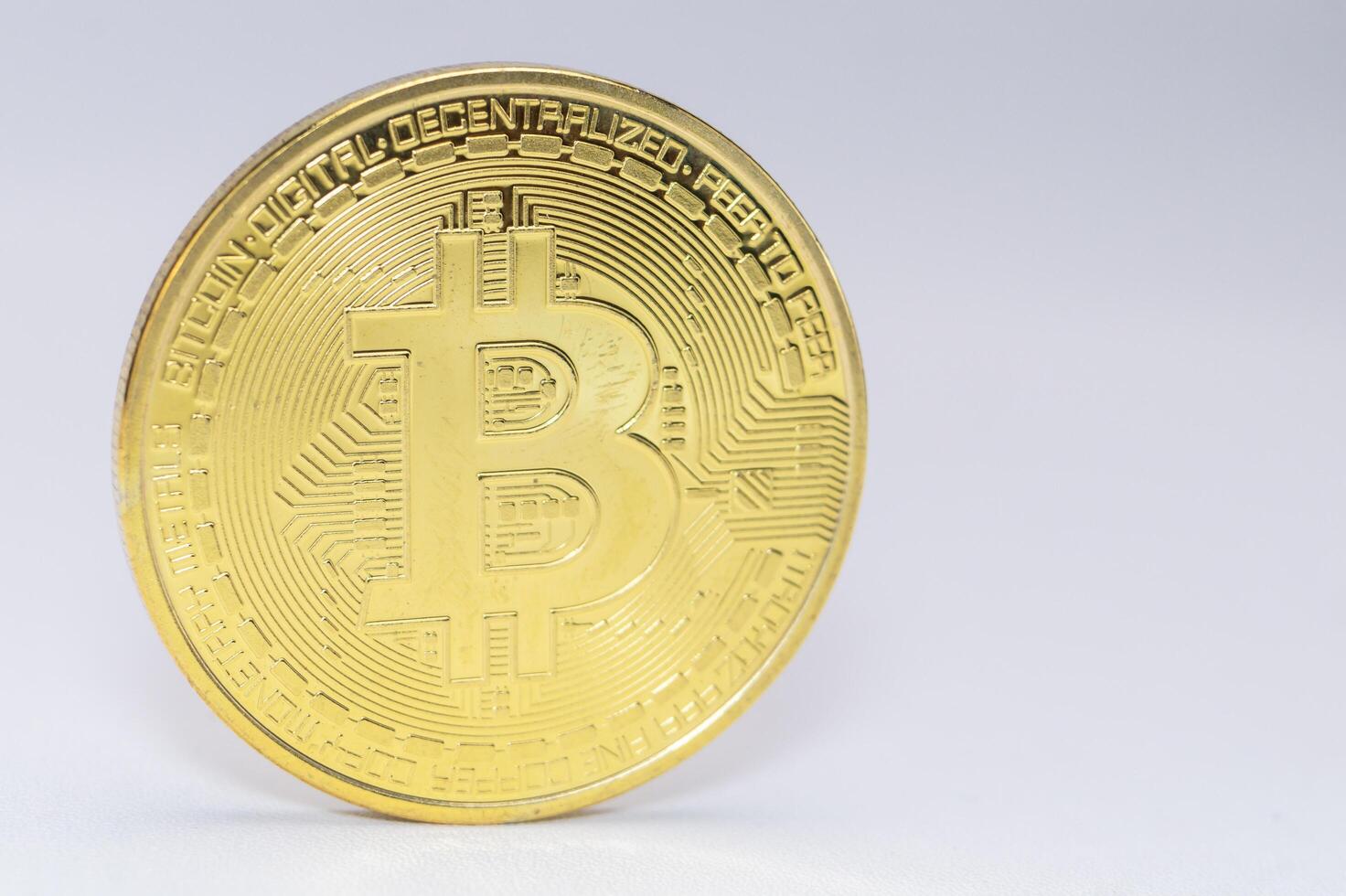Featured Post

Featured
Will Crypto Survive the Next Global Recession?
By Anna Rose | October 1, 2025
Cryptocurrency has become a significant part of global financial markets, capturing attention from retail investors, institutions, and governments. While its adoption grows, questions about its resilience remain. One pressing concern is how cryptocurrencies like Bitcoin, Ethereum, and other digital assets will fare during the next global recession. Historical patterns, market volatility, regulatory environments, and investor behavior all play a role in determining crypto's ability to survive economic downturns. This article explores the factors that may influence cryptocurrency during a global recession and the strategies investors can use to navigate turbulent markets.
Cryptocurrency and Market Volatility
Cryptocurrencies are inherently volatile. Daily price swings of 5–10% or more are common, and this volatility is amplified during economic uncertainty. While volatility creates opportunities for high returns, it also increases risk during recessions:
Investors may liquidate assets to cover losses or meet liquidity needs.
Speculative projects and altcoins may collapse under financial pressure.
Market sentiment can shift rapidly, magnifying price declines.
Historical Performance in Economic Stress
Cryptocurrency is relatively new, so historical data on recessions is limited. However, some insights can be drawn from past market downturns:
COVID-19 Market Crash (March 2020): Bitcoin dropped roughly 50% in days but recovered within months, highlighting resilience in certain conditions.
Traditional Market Correlations: During times of financial stress, crypto has sometimes moved in tandem with equities, suggesting it may not always act as a safe haven.
Factors Influencing Crypto During a Recession
Liquidity Needs: Investors may sell crypto to cover losses elsewhere, increasing market pressure.
Institutional Exposure: Growing institutional investment links crypto to traditional financial systems, potentially amplifying systemic risks.
Regulatory Actions: Governments may introduce stricter regulations during economic crises to stabilize markets.
Network Strength: Bitcoin and major cryptocurrencies benefit from established networks and strong liquidity, supporting long-term resilience.
Market Sentiment: Fear and uncertainty often drive investor behavior, impacting crypto prices even if fundamentals remain intact.
Potential Scenarios During a Global Recession
Scenario 1: Crypto Collapses with Markets
If cryptocurrencies behave like speculative assets, they may experience sharp declines alongside stocks and commodities, driven by panic selling and liquidity shortages.
Scenario 2: Crypto as a Safe Haven
Some proponents argue that Bitcoin and other limited-supply cryptocurrencies could serve as digital gold, preserving value when fiat currencies weaken or inflation rises.
Scenario 3: Partial Resilience
Major cryptocurrencies may retain value due to established networks and adoption, while smaller altcoins and speculative projects could collapse, creating a bifurcated market.
Impact on Investors
High volatility may amplify portfolio losses, especially for investors heavily weighted in crypto.
Diversification across assets and traditional safe havens can reduce risk exposure.
Long-term investors may benefit from holding major cryptocurrencies through short-term market downturns.
Liquidity management is essential to avoid forced liquidation during market stress.
Strategies to Weather a Recession
Diversification: Maintain a balanced portfolio of cryptocurrencies, fiat assets, stocks, and bonds.
Stablecoins: Holding stablecoins can protect capital from extreme volatility while remaining in the crypto ecosystem.
Risk Assessment: Evaluate exposure to high-risk altcoins and speculative tokens.
Long-Term Perspective: Focus on well-established projects with strong networks and adoption potential.
Emergency Funds: Maintain fiat reserves to cover short-term needs without forced crypto sales.
Regulatory and Economic Considerations
Government responses during a recession will influence crypto resilience:
Monetary policy changes, interest rate adjustments, and stimulus measures may impact liquidity and investor confidence.
Regulators may implement stricter reporting, taxation, or trading rules, affecting market dynamics.
Central Bank Digital Currencies (CBDCs) could alter the role of private cryptocurrencies in the global financial system.
Technological and Market Resilience
Despite economic challenges, cryptocurrency networks themselves remain resilient:
Decentralized infrastructure reduces dependence on traditional financial systems.
Blockchain security ensures transaction integrity and immutability.
Widespread global adoption provides liquidity and support even during localized downturns.
Long-Term Outlook
While short-term losses are likely during a global recession, major cryptocurrencies may survive due to their established networks, scarcity, and growing institutional adoption. Investors who prepare with diversified portfolios, stablecoin holdings, and careful risk management are more likely to endure market turbulence. The next recession will be a critical test of crypto's resilience as both an asset class and a component of the global financial system.
FAQs
1. Can crypto act as a safe haven during a recession?
Some cryptocurrencies, like Bitcoin, may provide a hedge against inflation and fiat currency instability, but their high volatility means they are not a guaranteed safe haven.
2. Will all cryptocurrencies survive a global recession?
Major cryptocurrencies with strong adoption are more likely to survive, while smaller, speculative tokens may collapse under market pressure.
3. How can investors protect themselves during a recession?
Diversification, holding stablecoins, maintaining emergency funds, and focusing on established crypto projects can reduce risk and improve resilience.
Read More
1401
0
Latest Posts
Tutorial


The Ethics of Mining: Profit vs. Environment
By Anna Rose | Oct 1, 2025
Mining has long been a cornerstone of industrial development and economic growth, providing essential materials for construction, electronics, energy, and more. However, the pursuit of profit through mining often comes at a significant environmental cost. From deforestation and water pollution to greenhouse gas emissions and ecosystem destruction, mining raises ethical questions about sustainability, corporate responsibility, and the balance between economic benefits and environmental protection. This article explores the ethical dilemmas of mining, its environmental impact, and strategies to reconcile profitability with ecological stewardship.
Understanding the Mining Industry
Mining involves extracting minerals, metals, and other natural resources from the earth. Industries that rely on mining include:
Energy production (coal, uranium, lithium for batteries)
Construction (sand, gravel, limestone)
Technology (copper, rare earth elements, gold for electronics)
Jewelry and luxury goods (gold, silver, diamonds)
The Profit Imperative
Mining companies are often under pressure to maximize returns for shareholders, which can lead to environmental compromises:
Expanding operations without adequate environmental safeguards.
Cutting costs by minimizing waste management and pollution control.
Accelerating extraction of high-demand resources, sometimes illegally or unsustainably.
Prioritizing short-term profits over long-term ecosystem health.
Environmental Impacts of Mining
Mining can have severe and lasting environmental consequences:
Deforestation: Clearing land for mines destroys habitats and reduces biodiversity.
Soil Degradation: Heavy machinery and chemical use can render land infertile.
Water Pollution: Runoff containing heavy metals and toxic chemicals contaminates rivers and groundwater.
Air Pollution: Dust, particulate matter, and emissions from mining operations harm air quality.
Greenhouse Gas Emissions: Mining operations, especially coal and oil, contribute significantly to climate change.
Waste Generation: Tailings and slag piles pose long-term contamination risks.
Ethical Considerations in Mining
Mining ethics revolve around balancing economic gain with environmental and social responsibility. Key considerations include:
Environmental Stewardship: Reducing ecological damage and rehabilitating mined land.
Human Rights: Ensuring safe labor conditions and respecting indigenous land rights.
Transparency: Publicly reporting environmental impact and community engagement initiatives.
Long-Term Responsibility: Considering the legacy of mining operations for future generations.
Case Studies in Ethical Mining
1. Conflict-Free Diamonds
The Kimberley Process Certification Scheme was developed to prevent diamonds mined in war zones from entering global markets. This initiative demonstrates how ethical frameworks can address human rights and social responsibility while maintaining profitability.
2. Renewable Energy and Lithium Mining
Lithium is essential for batteries powering electric vehicles, yet mining it can drain water supplies in arid regions. Companies are exploring methods to recycle lithium and reduce environmental damage, reflecting a balance between green energy goals and ecological impact.
3. Reclaimed and Urban Mining
Recovering metals from electronic waste, industrial byproducts, and old infrastructure reduces the need for traditional mining, highlighting a sustainable approach to resource extraction.
Balancing Profit and Sustainability
Mining companies can adopt practices that align profitability with environmental ethics:
Investing in cleaner extraction technologies.
Implementing strict environmental management plans.
Engaging in land rehabilitation and reforestation projects.
Complying with local and international regulations.
Promoting transparency and reporting on sustainability efforts.
The Role of Regulation
Governments play a critical role in enforcing ethical mining practices:
Setting environmental standards and emission limits.
Monitoring and auditing mining operations.
Imposing penalties for violations of environmental or labor laws.
Encouraging renewable and low-impact mining through incentives and subsidies.
Technological Innovations Supporting Ethical Mining
Automation and Robotics: Reduces human risk and environmental disruption.
Remote Sensing and GIS: Helps monitor land use and detect environmental changes in real time.
Water Recycling Systems: Minimizes water use and prevents contamination.
Bioleaching: Uses microbes to extract metals from ore, reducing chemical usage.
Community Engagement and Corporate Responsibility
Ethical mining also involves social responsibility:
Consulting and compensating local communities affected by mining operations.
Providing employment, healthcare, and education programs.
Creating transparent grievance mechanisms for local stakeholders.
Challenges in Achieving Ethical Mining
High costs of sustainable mining technologies may reduce profit margins.
Global demand for minerals often pressures companies to prioritize extraction speed over ethics.
Corruption and weak enforcement in some regions can undermine ethical initiatives.
Balancing short-term shareholder expectations with long-term environmental responsibility remains a persistent challenge.
Future of Ethical Mining
The mining industry is slowly shifting toward more sustainable practices. Investors increasingly favor companies demonstrating strong environmental, social, and governance (ESG) performance. Consumer demand for ethically sourced products also pressures companies to prioritize responsible practices. As technology advances and regulatory frameworks strengthen, it is possible to reconcile mining profitability with environmental stewardship and social responsibility.
FAQs
1. Can mining be truly sustainable?
While mining inherently impacts the environment, sustainable practices like recycling, cleaner extraction methods, and land rehabilitation can minimize damage and improve long-term sustainability.
2. Why is ethical mining important?
Ethical mining ensures environmental protection, human rights compliance, and responsible use of natural resources, balancing profit with societal and ecological responsibility.
3. How can consumers support ethical mining?
Consumers can choose products certified as ethically sourced, support companies with strong ESG practices, and advocate for transparency in supply chains.
Read More
1782
0
Tutorial


Crypto vs. Gold Which Is the Better Store of Value?
By Anna Rose | Oct 1, 2025
Investors have long considered gold a reliable store of value, protecting wealth against inflation and economic uncertainty. With the rise of cryptocurrency, particularly Bitcoin, a new contender has emerged. Digital assets offer portability, divisibility, and borderless transactions, challenging traditional perceptions of value preservation. This article compares crypto and gold as stores of value, examining their advantages, risks, historical performance, and the factors that influence investor decisions.
Understanding a Store of Value
A store of value is an asset that maintains its purchasing power over time. Ideal stores of value resist inflation, are durable, widely accepted, and can be easily transferred or traded. Investors use stores of value to preserve wealth, hedge against economic instability, and diversify portfolios.
Gold as a Traditional Store of Value
Gold has been used as a store of value for thousands of years. Its physical scarcity, intrinsic properties, and global acceptance have made it a cornerstone of financial security.
Durability: Gold does not corrode, decay, or lose its value over time.
Scarcity: Limited global supply supports its long-term value.
Global Acceptance: Universally recognized and tradable.
Hedge Against Inflation: Historically preserves purchasing power during economic crises.
Liquidity: Gold markets are mature and highly liquid.
Cryptocurrency as a Modern Store of Value
Bitcoin and other cryptocurrencies offer new possibilities as digital stores of value. While relatively new, crypto has unique properties that appeal to investors seeking alternatives to traditional assets.
Decentralization: Not controlled by any government or central bank.
Scarcity: Bitcoin has a capped supply of 21 million coins, creating scarcity similar to gold.
Portability: Digital form allows easy transfer across borders.
Divisibility: Bitcoin can be divided into very small units, enabling microtransactions and precise allocation of wealth.
Programmability: Crypto can integrate with DeFi platforms, smart contracts, and digital wallets, expanding its use beyond simple storage.
Comparing Volatility
One of the main differences between crypto and gold is price stability:
Gold: Prices fluctuate modestly over time, offering predictability and stability.
Cryptocurrency: Prices can swing dramatically within hours or days, providing opportunities for high returns but also high risk.
Historical Performance
Gold has maintained value over centuries, serving as a reliable hedge during wars, recessions, and inflationary periods. Cryptocurrency, by contrast, has a shorter track record but has shown explosive growth, particularly Bitcoin:
Bitcoin rose from a few cents in 2009 to tens of thousands of dollars within a decade.
Gold has historically delivered steady returns averaging 1–3% annually, with spikes during crises.
Crypto’s higher potential returns come with increased volatility and uncertainty.
Liquidity and Accessibility
Both assets are liquid, but accessibility differs:
Gold: Requires physical storage, insurance, and access to markets, though ETFs provide digital exposure.
Cryptocurrency: Fully digital, easily bought, sold, and transferred via exchanges or wallets 24/7 worldwide.
Inflation Hedge Comparison
Gold has traditionally been used to hedge inflation. Crypto, especially Bitcoin, is increasingly viewed as “digital gold” due to its limited supply:
Gold retains value when fiat currencies weaken.
Bitcoin’s capped supply offers potential protection against monetary inflation, though it is still vulnerable to speculative market swings.
Security and Risk Factors
Security considerations differ for each asset:
Gold: Requires secure storage to prevent theft; insurance adds costs.
Cryptocurrency: Requires digital security, such as private keys and secure wallets; exchanges can be hacked.
Both assets carry systemic risks: gold markets can be affected by geopolitical events, while crypto markets are sensitive to regulatory changes and technological vulnerabilities.
Portability and Flexibility
Cryptocurrency offers significant advantages in portability and flexibility:
Instant transfers across borders without intermediaries.
Easy storage in digital wallets or cold storage devices.
Integration with DeFi platforms allows staking, lending, and earning rewards.
Gold is heavy and cumbersome to transport physically, though digital gold ETFs address this limitation.
Regulatory Considerations
Gold is heavily regulated, with established standards for authenticity, trading, and taxation.
Cryptocurrency regulations vary by country, affecting ownership, trading, and taxation. Regulatory uncertainty adds risk to crypto as a store of value.
Investor Profiles
Choice between gold and crypto depends on risk tolerance and investment goals:
Conservative Investors: Prefer gold for stability, long-term preservation, and low volatility.
Risk-Tolerant Investors: May favor crypto for high growth potential, diversification, and innovative opportunities.
Balanced Approach: Many investors allocate funds to both, using gold as a safety net and crypto for growth potential.
Future Outlook
Both assets have roles in future financial systems:
Gold will likely remain a safe haven during economic crises and geopolitical instability.
Cryptocurrency, particularly Bitcoin, may increasingly function as digital gold and a hedge against fiat currency inflation.
Technological advancements, DeFi integration, and global adoption could enhance crypto’s utility and acceptance as a long-term store of value.
FAQs
1. Can cryptocurrency replace gold as a store of value?
While Bitcoin shares qualities with gold, including scarcity and divisibility, its volatility and regulatory uncertainties mean it may complement rather than replace gold.
2. Which is safer for long-term wealth preservation?
Gold is generally safer due to its stability and historical reliability, while crypto carries higher risk and potential for rapid value changes.
3. Should investors hold both gold and crypto?
Many financial advisors recommend a diversified portfolio, including both gold for stability and crypto for growth potential.
Read More
9967
0
Tutorial


Why Governments Fear Cryptocurrency
By Anna Rose | Oct 1, 2025
Cryptocurrency has rapidly evolved from a niche digital innovation to a global financial force. While many individuals and businesses embrace digital assets for their efficiency, transparency, and investment potential, governments around the world often approach crypto with caution or outright suspicion. From Bitcoin and Ethereum to emerging stablecoins, digital currencies challenge traditional financial systems, regulatory frameworks, and national monetary control. This article explores why governments fear cryptocurrency, the risks they perceive, and the potential measures they are taking to regulate or control its growth.
The Decentralization Challenge
One of the primary reasons governments fear cryptocurrency is its decentralized nature. Unlike traditional money controlled by central banks, crypto operates on a distributed ledger where no single authority regulates issuance or transactions.
Loss of Monetary Control: Governments cannot directly manage supply, interest rates, or inflation through decentralized cryptocurrencies.
Difficulty in Oversight: Monitoring transactions is challenging due to pseudonymity and cross-border flows.
Threat to National Currency: Popular adoption of crypto could reduce demand for fiat currency, undermining traditional economic policy tools.
Financial Crime and Illicit Activity
Cryptocurrency's pseudonymous transactions raise concerns about illegal activities such as money laundering, tax evasion, and financing of illicit operations.
Anonymous transactions make it harder to trace criminals.
Cross-border transfers can bypass capital controls and reporting requirements.
Regulatory frameworks are still developing to address crypto-based financial crimes effectively.
Volatility and Investor Risk
Governments are also concerned about the extreme volatility of cryptocurrencies, which can affect financial stability and expose retail investors to large losses.
Bitcoin and altcoins can fluctuate by more than 10% in a single day.
High-risk investments without protections can lead to market instability.
Regulatory bodies fear public backlash if unregulated investments collapse, prompting loss of confidence in financial systems.
Challenges to Taxation
Digital currencies complicate taxation. Transactions on public blockchains are harder to monitor, and profits from crypto trades may go unreported.
Difficulty in tracking income and capital gains from crypto assets.
Potential revenue loss for governments if crypto adoption grows without proper oversight.
Implementation of effective reporting mechanisms requires collaboration between exchanges, wallet providers, and regulators.
Emergence of Stablecoins and Private Digital Money
Stablecoins pegged to fiat currencies or other assets pose additional concerns for governments. Large-scale adoption could reduce the need for central bank-issued money.
Potential to destabilize national monetary policy if used widely for payments.
Risk of private entities controlling significant portions of the money supply.
Pressure on governments to create their own central bank digital currencies (CBDCs) to maintain control.
Cybersecurity Risks
Governments worry about the security of digital assets and the blockchain infrastructure supporting them.
Hacks, phishing, and smart contract vulnerabilities can lead to large financial losses.
National security concerns arise if crypto is used for ransomware or cybercrime.
Protecting citizens’ funds requires developing frameworks for regulation and insurance mechanisms.
International Competition and Policy Gaps
The global and decentralized nature of crypto creates challenges in enforcement and coordination among nations.
Some countries adopt crypto-friendly policies, attracting capital and talent, while others impose bans or restrictions.
Regulatory arbitrage allows individuals and businesses to operate in jurisdictions with weaker oversight.
International collaboration is needed to prevent misuse while enabling innovation.
Government Responses
Governments are taking varied approaches to crypto:
Bans and Restrictions: Countries like China and India have restricted cryptocurrency trading and mining.
Regulation: The U.S., EU, and other nations implement regulations for exchanges, taxation, and reporting.
Central Bank Digital Currencies (CBDCs): Governments are exploring digital versions of national currencies to compete with private crypto adoption.
Licensing and Compliance: Many jurisdictions require crypto businesses to obtain licenses, comply with anti-money laundering (AML) laws, and follow know-your-customer (KYC) rules.
Potential Benefits Governments Recognize
Despite fears, some governments acknowledge opportunities presented by crypto and blockchain technology:
Enhanced payment efficiency and reduced transaction costs.
Faster cross-border transfers and remittances.
New sources of tax revenue if properly monitored.
Innovation in public services, including digital identity and transparent recordkeeping.
Conclusion
Governments fear cryptocurrency primarily because it challenges traditional financial systems, introduces security and regulatory risks, and complicates taxation and monetary control. However, with thoughtful regulation, innovation-friendly policies, and public education, governments can mitigate risks while leveraging the benefits of digital assets. The balance between oversight and innovation will define how crypto integrates into the global economy in the coming years.
FAQs
1. Why do governments view cryptocurrency as a threat?
Cryptocurrency challenges monetary control, regulatory oversight, taxation, and can be used for illicit activities, which governments perceive as threats.
2. How are governments responding to crypto?
Responses include bans, regulation, licensing, taxation frameworks, and the development of central bank digital currencies (CBDCs).
3. Can governments benefit from cryptocurrency?
Yes. Governments can leverage crypto for faster payments, reduced transaction costs, new revenue streams, and blockchain-based public services.
Read More
998
0
Tutorial


Is Crypto Just a Bubble Waiting to Burst?
By Anna Rose | Oct 1, 2025
Cryptocurrency has captured global attention, often accompanied by headlines about dramatic price surges and sudden crashes. Bitcoin reaching all-time highs, followed by sharp drops, has led many to question whether the entire crypto market is a speculative bubble. Investors, regulators, and analysts debate whether digital assets represent a transformative financial innovation or an overhyped trend susceptible to collapse. This article examines the factors behind the “crypto bubble” perception, historical price patterns, and the arguments for and against the sustainability of cryptocurrency.
Understanding Financial Bubbles
A financial bubble occurs when the price of an asset rises far beyond its intrinsic value, fueled by speculation and investor enthusiasm. Bubbles often end with a sudden correction, sometimes wiping out a large portion of the invested capital. Classic examples include the Dutch Tulip Mania in the 1600s and the dot-com bubble of the late 1990s.
Is Cryptocurrency Experiencing a Bubble?
Cryptocurrency exhibits several characteristics associated with speculative bubbles:
Rapid Price Increases: Bitcoin and other digital assets have experienced extreme price growth within short periods.
High Volatility: Frequent swings of 10% or more in a single day are common in crypto markets.
Media Hype: Widespread coverage attracts inexperienced investors, fueling demand without consideration of intrinsic value.
FOMO (Fear of Missing Out): Social media buzz and celebrity endorsements encourage rapid investment without understanding risks.
Speculative Investments: Many investors buy crypto purely for potential short-term gains rather than utility or long-term use.
Arguments Suggesting Crypto Is a Bubble
Some digital assets lack clear intrinsic value or revenue-generating mechanisms.
Extreme speculation drives prices more than adoption or real-world usage.
Regulatory uncertainty could trigger sudden market declines.
Fraudulent projects, scams, and rug pulls undermine investor confidence.
Arguments Against the Bubble Theory
Blockchain technology has real-world applications beyond speculative trading, such as decentralized finance (DeFi) and supply chain solutions.
Cryptocurrencies like Bitcoin have limited supply, introducing scarcity and potential store-of-value properties.
Institutional adoption by companies and investment funds signals growing legitimacy.
Stablecoins, NFTs, and smart contracts represent functional utilities within the broader crypto ecosystem.
Price volatility is expected in emerging technologies and markets; this does not necessarily indicate a bubble.
Historical Crypto Market Cycles
Examining past cycles can provide context:
2013 Bitcoin Surge: Bitcoin jumped from $100 to over $1,100 before falling by 80%.
2017 Bull Run: Bitcoin reached nearly $20,000 before collapsing to around $3,000 in 2018.
2020–2021 Boom: Prices surged past $60,000, followed by corrections exceeding 50%.
While these cycles show bubble-like behavior, each was followed by renewed adoption, innovation, and market maturation, indicating that crypto markets may not behave like traditional asset bubbles.
Factors Influencing Crypto Sustainability
Regulation: Clearer rules can stabilize markets and protect investors.
Adoption: Increasing use in payments, finance, and NFTs enhances intrinsic value.
Technological Innovation: Layer 2 solutions, smart contracts, and interoperability improve functionality.
Institutional Investment: Corporate and fund participation adds credibility and long-term support.
Market Maturity: Development of futures, ETFs, and hedging tools reduces volatility over time.
Risks for Investors
High price volatility can result in significant gains or losses in short periods.
Market sentiment is heavily influenced by social media, celebrities, and news cycles.
Regulatory crackdowns can create sudden liquidity issues.
Many altcoins and tokens are speculative, with limited long-term prospects.
Security breaches and scams continue to pose threats to digital asset holdings.
Indicators of a Crypto Bubble
Excessive leverage and borrowing to buy crypto.
Rapidly rising valuations of untested blockchain projects.
Overhyped media narratives driving prices rather than utility.
Mass retail participation without understanding of technology or risk.
Short-term speculative trends outweighing long-term adoption.
Strategies for Navigating Potential Crypto Bubbles
Diversify investments to mitigate exposure to any single crypto asset.
Focus on projects with clear utility, strong development teams, and sustainable tokenomics.
Use dollar-cost averaging to reduce the impact of market volatility.
Stay informed about regulatory developments and technological innovations.
Consider stablecoins or other low-volatility digital assets for risk management.
Conclusion
Whether cryptocurrency is a bubble waiting to burst remains a debated question. Evidence of rapid price swings and speculative behavior suggests bubble-like tendencies, yet underlying blockchain technology, growing adoption, and institutional interest support a case for long-term value. Investors and enthusiasts should approach the market cautiously, understanding both the potential rewards and inherent risks. As crypto markets mature, they may evolve from volatile speculative environments into sustainable, functional financial systems.
FAQs
1. Is Bitcoin a bubble?
Bitcoin has experienced bubble-like cycles, but its long-term adoption, scarcity, and institutional interest suggest it may hold intrinsic value beyond speculation.
2. Can all cryptocurrencies be considered bubbles?
No. While some tokens are highly speculative, others provide utility through DeFi, NFTs, or blockchain infrastructure, offering real-world applications.
3. How can investors protect themselves in volatile crypto markets?
Strategies include diversification, investing in established projects, using dollar-cost averaging, and staying informed about market and regulatory developments.
Read More
6776
0
Tutorial


Why Celebrities and Athletes Are Jumping Into Crypto
By Anna Rose | Oct 1, 2025
Cryptocurrency has evolved beyond being a niche technology for tech enthusiasts into a mainstream financial phenomenon, attracting attention from all sectors, including entertainment and sports. Celebrities and athletes are increasingly investing in, endorsing, or launching crypto projects, NFTs, and tokenized ventures. This trend is reshaping the perception of digital assets, bringing them to a wider audience while influencing market behavior. In this article, we explore why high-profile figures are jumping into crypto, how they participate, and the implications for fans, investors, and the crypto ecosystem.
Celebrity Influence in the Crypto Space
High-profile individuals have a unique ability to drive awareness and adoption. Their involvement in cryptocurrency often sparks media attention, increases public interest, and can even influence token prices. The reasons celebrities and athletes are drawn to crypto include:
Investment Opportunities: Digital assets can offer high returns and portfolio diversification.
Brand Expansion: Launching NFTs, tokens, or crypto projects allows personal branding in the digital economy.
Fan Engagement: Tokenized platforms and NFTs provide new ways to interact with fans.
Innovation Appeal: Crypto and blockchain technologies align with forward-thinking and disruptive ventures.
Examples of Celebrities in Crypto
1. Snoop Dogg
The legendary rapper has been a long-time supporter of Bitcoin and Ethereum. He has also launched NFT collections, showcasing music, art, and digital collectibles for fans.
2. Paris Hilton
Paris Hilton has embraced crypto and NFTs, using her platform to promote blockchain-based digital art and celebrity NFTs, while investing in crypto startups.
3. Tom Brady
The NFL superstar co-founded the NFT platform Autograph, which focuses on sports and entertainment collectibles, enabling fans to purchase and trade exclusive digital memorabilia.
4. Serena Williams
Serena Williams has invested in multiple blockchain startups, including NFT projects and Web3 platforms, supporting innovation while diversifying her portfolio.
5. Mike Tyson
The boxing legend launched his own NFTs and is involved in crypto promotions, engaging fans with unique digital collectibles.
6. Elon Musk
Though primarily known for Tesla and SpaceX, Elon Musk has influenced cryptocurrency markets through endorsements, particularly Bitcoin and Dogecoin, demonstrating the market impact of celebrity activity.
How Celebrities and Athletes Engage With Crypto
Investing: Buying and holding cryptocurrencies or participating in token sales for potential long-term gains.
NFT Creation: Minting digital art, music, or collectibles that fans can buy, sell, or trade.
Endorsements: Partnering with crypto companies or platforms to promote products and services.
Launching Tokens: Developing personal or branded tokens to reward fans and create new revenue streams.
Metaverse Projects: Building digital avatars, virtual experiences, or exclusive fan environments in blockchain-based metaverses.
Benefits for Celebrities and Athletes
Revenue Diversification: Crypto and NFT sales provide alternative income beyond traditional media and sponsorships.
Global Reach: Digital assets can be sold to international fans without currency restrictions.
Fan Loyalty: Tokenized engagement strengthens fan communities and loyalty.
Innovation Leadership: Early adoption positions celebrities as trendsetters in emerging technologies.
Risks and Considerations
Despite the potential, celebrity involvement in crypto carries risks:
Market Volatility: Cryptocurrency prices can fluctuate significantly, impacting investments and NFTs' perceived value.
Regulatory Scrutiny: Endorsing or issuing crypto products may attract attention from financial regulators.
Reputation Risk: Associating with fraudulent or poorly performing projects can damage credibility.
Security Threats: Digital wallets and NFTs are vulnerable to hacking if not properly secured.
The Impact on Fans and the Market
Celebrity involvement often increases adoption by normalizing crypto participation. Fans may be inspired to purchase tokens or NFTs, which can:
Create secondary markets where collectibles and tokens are traded.
Boost awareness of blockchain and Web3 applications.
Encourage other celebrities and influencers to explore crypto opportunities.
Influence trends and even short-term market movements.
Future Trends in Celebrity Crypto Adoption
Integrated Metaverse Experiences: Celebrities may launch exclusive virtual concerts, sports events, or meet-and-greets in blockchain-powered worlds.
Fan Tokens: Personalized tokens to reward loyal fans with exclusive content or voting rights.
Collaborative NFT Projects: Cross-industry partnerships between celebrities, artists, and game developers.
Decentralized Governance: Celebrity-backed projects may allow fans to participate in decision-making via governance tokens.
Enhanced Crypto Education: Celebrities may play a key role in mainstream education about blockchain and digital finance.
FAQs
1. Why are celebrities interested in cryptocurrency?
They are attracted to investment opportunities, brand expansion, fan engagement, and the chance to participate in innovative financial technologies.
2. Can fan involvement in celebrity NFTs be profitable?
It can be, but success depends on demand, rarity, and market conditions. Not all NFTs gain value.
3. Are there risks for celebrities endorsing crypto?
Yes. They face financial, legal, and reputational risks, especially if the projects are volatile, unregulated, or fraudulent.
Read More
993
0
Tutorial


How Gaming and Crypto Are Creating New Economies
By Anna Rose | Oct 1, 2025
The intersection of gaming and cryptocurrency has given rise to entirely new digital economies. Blockchain technology enables players to earn, trade, and own in-game assets in ways that were impossible with traditional gaming. From play-to-earn (P2E) models to non-fungible tokens (NFTs) and tokenized game currencies, crypto is transforming the gaming industry into a dynamic financial ecosystem. This article explores how gaming and crypto are creating new opportunities for players, developers, and investors while reshaping the concept of value in virtual worlds.
The Emergence of Play-to-Earn (P2E) Models
Play-to-earn gaming allows players to earn cryptocurrency or digital assets as they participate in games. Unlike traditional games, where rewards are confined to in-game items with no real-world value, P2E models enable players to monetize their time and skills.
Axie Infinity: A pioneering P2E game where players breed, battle, and trade creatures called Axies to earn tokens (SLP and AXS).
The Sandbox: A virtual world where players can create, trade, and monetize virtual assets using the SAND token.
Decentraland: A blockchain-based metaverse where users buy, sell, and develop virtual land using the MANA token.
NFTs and True Digital Ownership
Non-fungible tokens (NFTs) play a central role in gaming economies by providing verifiable ownership of digital items. Each NFT is unique, allowing players to own rare weapons, skins, characters, or land parcels that can be traded or sold outside the game environment.
Scarcity: NFTs ensure rarity and value of in-game items.
Interoperability: Some NFTs can be used across multiple games or platforms.
Monetization: Players can earn real-world income by selling valuable NFTs.
Token Economies in Gaming
Crypto gaming often includes native tokens that power in-game economies. These tokens serve multiple purposes:
Currency: Used to buy items, upgrade characters, or access premium content.
Governance: Token holders can vote on game development, rules, and updates.
Staking: Players can stake tokens to earn rewards or unlock special features.
Decentralized Marketplaces
Blockchain enables decentralized marketplaces where players can trade digital assets directly. Unlike traditional in-game economies controlled by developers, decentralized marketplaces allow peer-to-peer transactions without intermediaries.
Players can sell NFTs for cryptocurrency, creating real-world value.
Marketplaces increase liquidity and accessibility for rare digital assets.
Developers can earn a percentage of secondary sales through smart contract royalties.
Impact on Game Developers
Crypto gaming opens new revenue streams and engagement models for developers:
Monetization through token sales and in-game NFTs.
Increased player retention due to earning potential.
Community-driven development where token holders influence game updates.
Global player base participation without traditional banking barriers.
Global Economic Implications
Crypto gaming economies have impacts beyond the digital space:
Income generation: Players in developing countries can earn substantial income through play-to-earn games.
Job creation: NFT designers, blockchain developers, and community managers find employment within the ecosystem.
Financial inclusion: Crypto-based earnings provide access to financial systems for unbanked populations.
Cross-border trade: Tokens and NFTs can be exchanged globally, creating new international marketplaces.
Challenges in Gaming Crypto Economies
Regulatory Uncertainty: Governments are still defining laws for crypto and virtual assets.
Volatility: Token prices can fluctuate, affecting player income stability.
Security Risks: Hacks, phishing, and smart contract vulnerabilities can threaten digital assets.
Market Saturation: The rapid growth of P2E games may dilute value if too many projects compete simultaneously.
Technical Barriers: Blockchain integration and wallet management require new skills from players and developers.
Future Trends in Gaming and Crypto
Integration with Metaverse: Virtual worlds will combine gaming, social interaction, and finance.
Interoperable NFTs: Assets usable across multiple games and platforms, enhancing value.
Institutional Investment: Major companies may invest in P2E platforms and NFT ecosystems.
Hybrid Models: Games combining free-to-play, subscription, and crypto rewards will diversify monetization.
Enhanced Security and UX: Improvements in blockchain protocols will make crypto gaming safer and more user-friendly.
Case Study: Axie Infinity
Axie Infinity demonstrates the transformative potential of crypto gaming:
Players breed and battle creatures called Axies, earning SLP and AXS tokens.
Players can trade Axies and tokens on global marketplaces.
Entire communities, particularly in developing countries, rely on Axie Infinity for income.
The game has inspired other P2E platforms and NFT ecosystems, setting a precedent for crypto-based economies.
Conclusion
The fusion of gaming and cryptocurrency is creating innovative economic models where digital play translates into tangible value. With NFTs, tokenized assets, and decentralized marketplaces, players can monetize skills and creativity, while developers gain new revenue streams and community engagement tools. Although challenges like volatility, security, and regulation remain, the potential for global economic impact is significant. As the ecosystem matures, gaming and crypto are likely to continue shaping new financial paradigms and digital experiences.
FAQs
1. What is play-to-earn gaming?
Play-to-earn gaming allows players to earn cryptocurrency or digital assets while playing, creating real-world economic value.
2. How do NFTs impact gaming economies?
NFTs give players true ownership of in-game assets, enabling trade, sales, and monetization across decentralized marketplaces.
3. Can crypto gaming provide real income?
Yes, especially in play-to-earn games where players can earn tokens or NFTs that have real-world value.
Read More
1466
0
Tutorial


The Rise of Crypto Startups and Web3 Innovation
By Anna Rose | Oct 1, 2025
The cryptocurrency landscape has evolved dramatically over the past decade, giving birth to an entire ecosystem of startups and Web3 projects. These ventures are not only disrupting traditional finance but also creating new ways for people to interact with digital assets, decentralized applications, and blockchain-based services. From decentralized finance (DeFi) to non-fungible tokens (NFTs) and metaverse experiences, crypto startups are driving innovation across multiple sectors. This article explores the rise of these companies, the technologies they leverage, and the impact of Web3 innovation on the future of digital business.
Understanding Crypto Startups
Crypto startups are companies built around blockchain technology and digital assets. Unlike traditional fintech startups, these ventures often focus on decentralized models, tokenization, and community-driven governance. They aim to challenge existing financial systems, reduce intermediaries, and provide greater transparency and access.
Key Features of Crypto Startups
Decentralization: Many startups build platforms where decision-making is shared across users rather than centralized.
Token-Based Incentives: Startups often issue tokens to fund development, reward users, or provide governance rights.
Blockchain Integration: They leverage smart contracts and distributed ledgers for secure, automated, and transparent operations.
Community Focus: Many rely on active user communities to guide product development and adoption.
Web3: The New Frontier
Web3 represents the next generation of the internet, where decentralization, tokenization, and user ownership are central. Unlike Web2, where data is controlled by large corporations, Web3 allows users to own their data, interact directly with applications, and participate in governance. Crypto startups are at the forefront of building this ecosystem.
Core Components of Web3
Decentralized Applications (dApps): Applications running on blockchain networks that function without central servers.
Smart Contracts: Self-executing contracts that automate processes and enforce agreements without intermediaries.
Token Economies: Digital assets used to incentivize participation, governance, and liquidity in decentralized ecosystems.
Interoperability: Protocols that enable different blockchains and dApps to communicate and collaborate.
Examples of Innovative Crypto Startups
1. Uniswap
A leading decentralized exchange (DEX) that enables users to swap tokens directly without intermediaries. Uniswap introduced automated market makers (AMMs), revolutionizing the way liquidity is provided on blockchain networks.
2. Aave
A decentralized lending and borrowing platform allowing users to earn interest or borrow assets directly from smart contracts. Aave demonstrates the potential of DeFi for transforming traditional banking services.
3. OpenSea
The largest NFT marketplace, OpenSea enables users to buy, sell, and mint digital collectibles and art. It has been central to the growth of the NFT ecosystem and Web3 content ownership.
4. Chainlink
An oracle network providing real-world data to smart contracts. Chainlink connects blockchains to external data sources, making DeFi and other dApps functional and reliable.
5. Polygon
A layer-2 scaling solution for Ethereum, Polygon reduces transaction costs and improves speed, enabling more accessible Web3 applications and games.
Funding and Growth of Crypto Startups
Venture capital interest in crypto startups has surged in recent years. Investors are attracted by the potential for disruptive innovation and exponential growth. Key funding trends include:
Initial Coin Offerings (ICOs): Early method of raising capital by issuing tokens directly to investors.
Venture Capital (VC): Traditional investment firms are increasingly funding blockchain startups.
Decentralized Funding: DAOs and token-based fundraising enable communities to fund projects directly.
Challenges Facing Crypto Startups
Regulatory Uncertainty: Governments are still defining laws for cryptocurrencies and decentralized finance.
Market Volatility: Price fluctuations of cryptocurrencies can affect funding and revenue stability.
Security Risks: Hacks and smart contract vulnerabilities pose threats to user funds.
Scalability: Blockchain networks must handle growing transaction volumes efficiently.
Public Adoption: Mainstream users may be hesitant to adopt decentralized platforms due to complexity.
Impact of Web3 Innovation
Web3 innovation through crypto startups is reshaping industries beyond finance. Key areas of impact include:
Finance: DeFi platforms enable lending, borrowing, and trading without banks.
Gaming: Blockchain-based games offer tokenized assets, player ownership, and in-game economies.
Art and Media: NFTs allow creators to monetize digital art, music, and content while retaining royalties.
Supply Chain: Transparent and immutable ledgers improve tracking, compliance, and efficiency.
Identity and Privacy: Decentralized identity solutions give users control over personal data.
The Future of Crypto Startups and Web3
The growth of crypto startups and Web3 innovation is likely to continue as blockchain technology matures and adoption expands. The future may include:
More mainstream adoption of DeFi and NFT platforms.
Integration of crypto payments into everyday commerce.
Improved interoperability between different blockchain networks.
Greater regulatory clarity enabling safer investment and adoption.
Innovative applications in healthcare, education, and government services.
FAQs
1. What is a crypto startup?
A crypto startup is a company that builds products or services using blockchain technology, often focusing on digital assets, DeFi, or decentralized applications.
2. How does Web3 differ from Web2?
Web3 emphasizes decentralization, user ownership of data, and blockchain-based applications, whereas Web2 relies on centralized servers and corporate control.
3. Why are crypto startups attracting investors?
Investors are drawn by the potential for high growth, disruptive innovation, and the expansion of blockchain technology across industries.
Read More
7786
1
Tutorial


Top Companies That Already Use Cryptocurrency
By Anna Rose | Oct 1, 2025
Cryptocurrency has moved beyond niche adoption and into mainstream business operations. Today, an increasing number of companies are integrating digital assets into their payments, investments, or blockchain-based solutions. From tech giants to e-commerce platforms, businesses across sectors are exploring how cryptocurrencies like Bitcoin, Ethereum, and stablecoins can enhance efficiency, reduce costs, and attract new customers. This article highlights the top companies that have already embraced cryptocurrency and the ways they are using it.
Why Companies Use Cryptocurrency
Global transactions: Crypto allows businesses to receive payments from international clients without traditional banking hurdles.
Reduced fees: Digital assets often have lower transaction costs than credit cards or wire transfers.
Faster settlement: Blockchain transactions can settle in minutes instead of days.
Investment and diversification: Some companies hold cryptocurrency as part of their treasury strategy.
Brand positioning: Accepting crypto signals innovation and tech-savviness.
Top Companies Accepting or Using Cryptocurrency
1. Tesla
Elon Musk’s Tesla made headlines by investing in Bitcoin and briefly allowing Bitcoin payments for its vehicles. While the payment option has been paused due to environmental concerns, Tesla’s investment highlights the potential of crypto in corporate treasury management.
2. Microsoft
Microsoft has accepted Bitcoin for purchases of apps, games, and software on its Xbox and Windows platforms. The company also explores blockchain solutions for enterprise and cloud computing.
3. PayPal
PayPal allows users to buy, hold, and sell cryptocurrencies directly within its platform. Merchants can also accept crypto payments through PayPal Checkout, making it easier for businesses to integrate digital currencies.
4. Starbucks
Through a partnership with Bakkt, Starbucks allows customers to convert cryptocurrencies into gift card balances, enabling indirect crypto payments at stores worldwide.
5. Overstock
Overstock was one of the first major retailers to accept Bitcoin directly for online purchases. The company has continued to support digital currencies while integrating blockchain technology into its supply chain solutions.
6. AT&T
AT&T became one of the first major telecommunications companies to accept Bitcoin for online bill payments through BitPay, providing customers with more payment flexibility.
7. Shopify
Many Shopify merchants can accept cryptocurrencies using integrated payment gateways like Coinbase Commerce, BitPay, and CoinGate. This allows online stores to tap into the growing community of crypto users.
8. Tesla Energy Projects
Tesla has explored using Bitcoin and other cryptocurrencies to facilitate payments for solar panels and energy storage solutions, though adoption remains experimental.
9. Whole Foods
Through the partnership with Spedn, a crypto payments app powered by Flexa, Whole Foods enables customers to pay using cryptocurrencies at select locations.
10. PayPal-Owned Venmo
Venmo allows users to buy, sell, and hold cryptocurrencies within the app, enabling P2P transfers and merchant payments with digital assets.
11. Starbucks (Expanded)
Starbucks also runs pilot programs to allow crypto-backed loyalty points and integration with blockchain-based payment platforms, furthering its exploration into digital finance.
Ways Companies Are Using Cryptocurrency
Direct payments: Accepting crypto for goods and services.
Corporate treasury: Holding cryptocurrencies as an investment or hedge against inflation.
Blockchain solutions: Utilizing smart contracts and decentralized applications for business processes.
Customer rewards: Offering loyalty programs or gift cards redeemable via cryptocurrencies.
International remittances: Reducing fees and delays for cross-border payments.
Industries Adopting Cryptocurrency
Technology: Companies like Microsoft and Tesla leverage crypto for payments and treasury management.
Retail and E-commerce: Overstock, Shopify merchants, and AT&T accept crypto payments to attract global customers.
Food and Beverage: Starbucks and Whole Foods integrate crypto into payments and loyalty programs.
Financial Services: PayPal, Venmo, and Square facilitate crypto trading, payment processing, and investment.
Energy and Sustainability: Tesla and other energy companies experiment with crypto payments for renewable energy products.
Challenges Companies Face With Cryptocurrency
Volatility: Crypto prices can fluctuate significantly, impacting revenue and accounting.
Regulatory uncertainty: Different countries have varying rules regarding crypto use, taxation, and reporting.
Technical integration: Companies must implement secure wallets, payment gateways, and transaction tracking systems.
Customer adoption: Not all customers are familiar with cryptocurrency, limiting its practical use.
Security risks: Cyberattacks and phishing can threaten crypto holdings if proper security is not in place.
The Future of Cryptocurrency Adoption in Business
As blockchain technology matures and digital currencies become more widely accepted, more companies are likely to integrate crypto into their operations. Stablecoins, central bank digital currencies (CBDCs), and improved regulatory clarity will make it easier for businesses to accept digital payments safely. Early adopters stand to benefit from reduced transaction costs, new revenue streams, and stronger relationships with tech-savvy customers. By embracing cryptocurrency now, businesses can position themselves for a financial future where digital assets play a central role.
FAQs
1. Are these companies accepting all cryptocurrencies?
Most companies focus on popular cryptocurrencies like Bitcoin and Ethereum, though some also accept stablecoins or other major tokens.
2. Do businesses convert crypto to fiat immediately?
Many businesses use payment processors to instantly convert crypto to local currency to avoid volatility risks.
3. Is it safe for businesses to accept cryptocurrency?
Yes, provided they implement proper security measures, use reputable payment processors, and comply with local regulations.
Read More
1521
0
Tutorial


How Businesses Can Accept Crypto Payments
By Anna Rose | Oct 1, 2025
Cryptocurrency has moved from a niche technology into a mainstream financial tool. As Bitcoin, Ethereum, and other digital assets gain wider adoption, more businesses are exploring how to accept crypto payments. Whether you run an online store, a brick-and-mortar shop, or a global enterprise, integrating cryptocurrency payments can provide access to new customers, reduce transaction costs, and demonstrate innovation. This guide explains how businesses can start accepting crypto safely, the tools required, and the benefits and challenges of entering this fast-growing payment landscape.
Why Accept Cryptocurrency Payments?
Global reach: Cryptocurrencies allow businesses to receive payments from anywhere without currency conversion issues.
Lower transaction fees: Compared to traditional credit card processors, crypto payments often come with reduced fees.
No chargebacks: Blockchain transactions are irreversible, which protects businesses from fraud-related refunds.
Faster settlements: Transactions can be completed in minutes, compared to days for bank transfers.
Brand image: Accepting crypto signals forward-thinking and appeals to tech-savvy customers.
Ways Businesses Can Accept Crypto
1. Through a Payment Processor
Crypto payment processors make it easy for businesses to accept digital assets without managing the technical details. These services integrate with websites or point-of-sale systems and convert cryptocurrency into local currency if desired. Examples include:
BitPay: One of the largest crypto payment processors, supporting Bitcoin and stablecoins.
Coinbase Commerce: Allows merchants to accept multiple cryptocurrencies directly into their Coinbase account.
NOWPayments: Supports over 100 cryptocurrencies with automatic conversions.
CoinGate: Offers integration with major e-commerce platforms like WooCommerce and Shopify.
2. Accepting Payments Directly to a Wallet
Businesses can also accept crypto directly into their own wallets without third-party services. This approach avoids processing fees but requires more technical knowledge and accounting effort. Common wallet types include:
Hot wallets: Software wallets connected to the internet (e.g., MetaMask, Trust Wallet).
Cold wallets: Hardware wallets like Ledger or Trezor, which offer better security for long-term storage.
3. E-Commerce Integrations
Popular online store platforms now offer plugins to accept crypto payments:
Shopify: Supports integration with Coinbase Commerce, BitPay, and CoinPayments.
WooCommerce: WordPress-based stores can install plugins for crypto payment gateways.
Magento: Offers modules for accepting Bitcoin and altcoins.
4. Point-of-Sale (POS) Systems
Brick-and-mortar businesses can integrate crypto payments using POS systems that generate QR codes for customers to scan. The system confirms payment in real-time, just like card readers.
Steps to Start Accepting Crypto Payments
Decide which cryptocurrencies to accept: Start with popular options like Bitcoin, Ethereum, or stablecoins (USDT, USDC) for reduced volatility.
Choose a payment method: Use a third-party processor for convenience or a direct wallet for independence.
Integrate with your platform: Install a payment gateway plugin for your e-commerce store or POS system.
Update your checkout process: Clearly display crypto as a payment option for customers.
Handle accounting and taxes: Track crypto transactions carefully, as tax regulations may treat them as property rather than currency.
Secure your funds: Store long-term holdings in cold wallets and use strong security practices.
Dealing With Volatility
One of the biggest concerns businesses have is the price volatility of cryptocurrencies. A payment received in Bitcoin could drop in value within hours. To manage this risk, businesses can:
Use payment processors that instantly convert crypto to fiat currency.
Accept stablecoins like USDT or USDC, which are pegged to the U.S. dollar.
Set policies for converting crypto payments quickly into local currency.
Security Considerations
Security is critical when handling cryptocurrencies. Businesses should adopt these best practices:
Use hardware wallets for storing funds securely offline.
Enable two-factor authentication on accounts linked to payment processors.
Train staff on safe handling of crypto payments and wallet management.
Back up wallet private keys securely in multiple locations.
Legal and Tax Implications
Before accepting crypto, businesses must understand local regulations. Some jurisdictions classify cryptocurrencies as property, others as financial instruments. Important considerations include:
Tax reporting: Crypto payments may be subject to capital gains or income tax depending on the region.
Regulatory compliance: Some countries require businesses to follow anti-money laundering (AML) rules when accepting digital assets.
Accounting systems: Ensure that your accounting software can record crypto transactions properly.
Benefits for Businesses
New customer base: Attracts crypto enthusiasts who prefer paying in digital currencies.
Lower processing costs: Especially beneficial for businesses with international clients.
Faster payments: Eliminates delays from traditional banks and settlement processes.
Innovation and competitiveness: Differentiates your business in a crowded market.
Potential Challenges
Regulatory uncertainty: Laws around crypto are still evolving worldwide.
Market volatility: Prices can fluctuate rapidly, impacting revenue stability.
Technical complexity: Requires new systems and training for staff.
Customer adoption: Not all customers are ready to pay with crypto, so it should complement—not replace—traditional payment methods.
Future of Crypto Payments
As digital assets become more mainstream, businesses will likely see growing demand for crypto payment options. The rise of central bank digital currencies (CBDCs), improved regulatory clarity, and integration with traditional payment networks could make crypto a standard part of global commerce. Businesses that adopt crypto now may gain an early advantage in serving future consumer expectations.
FAQs
1. Do I need special software to accept crypto payments?
Yes, you can use a payment processor, wallet, or e-commerce plugin to handle transactions securely and efficiently.
2. Can I convert crypto payments to cash immediately?
Yes, most payment processors allow instant conversion to local currency to avoid volatility risks.
3. Is it safe for small businesses to accept crypto?
Yes, if proper security measures are in place, such as using trusted payment gateways and secure wallets.
Read More
993
0
Tutorial


How Oracles Power the DeFi Ecosystem
By Anna Rose | Oct 1, 2025
The decentralized finance (DeFi) ecosystem has grown rapidly, offering users the ability to trade, lend, borrow, and earn yield without relying on traditional banks. However, one critical component often overlooked in this system is the oracle. Oracles act as bridges between blockchains and the outside world, feeding DeFi protocols with accurate, real-time data. Without them, most DeFi applications would be unable to function effectively. This article explores how oracles power the DeFi ecosystem, their benefits, risks, and their future role in the blockchain space.
What Are Oracles in Blockchain?
In blockchain terms, an oracle is a service that provides external data to smart contracts. Since blockchains are self-contained systems, they cannot directly access off-chain information like market prices, weather conditions, or sports results. Oracles solve this problem by securely transmitting real-world data into blockchain applications.
For example, a lending platform may need the latest ETH/USD price to determine collateral value. Without an oracle, the platform would lack the crucial data required to operate securely.
Types of Oracles
Price Oracles: Deliver real-time market data for cryptocurrencies, commodities, and fiat currencies. Used in decentralized exchanges (DEXs) and lending platforms.
Data Oracles: Provide various types of off-chain information such as sports scores, election results, or shipping updates.
Cross-Chain Oracles: Facilitate communication between different blockchains, enabling interoperability across ecosystems.
Hardware Oracles: Gather data from physical devices such as IoT sensors, GPS trackers, or biometric systems.
Inbound vs. Outbound Oracles: Inbound oracles feed external data into a blockchain, while outbound oracles allow smart contracts to trigger actions in the real world.
How Oracles Work in DeFi
Smart contracts execute transactions automatically when certain conditions are met. However, they require reliable input data to function correctly. Oracles provide this data, usually in the form of price feeds or event updates.
Consider a DeFi lending protocol:
A user deposits ETH as collateral to borrow stablecoins.
The system requires the ETH price in USD to calculate the collateral ratio.
The oracle delivers real-time ETH/USD data from multiple exchanges.
If the ETH price drops below a certain threshold, the smart contract may trigger liquidation to protect lenders.
In this way, oracles serve as the information backbone of DeFi applications, ensuring that smart contracts operate based on accurate and tamper-proof data.
Popular Oracle Providers
Chainlink: The most widely adopted decentralized oracle network, securing billions in DeFi assets across multiple blockchains.
Band Protocol: A cross-chain oracle solution that delivers data using a delegated proof-of-stake (dPoS) mechanism.
API3: Focuses on creating decentralized APIs (dAPIs) to provide direct and transparent data feeds.
UMA (Universal Market Access): Uses optimistic oracles where disputes are resolved through token holder voting.
Tellor: A decentralized oracle protocol where miners compete to provide accurate data feeds.
Benefits of Oracles in DeFi
Automation: Enable smart contracts to execute without human intervention by supplying verified data.
Scalability: Allow DeFi platforms to expand into new markets and use cases, including insurance, prediction markets, and supply chains.
Transparency: Decentralized oracle networks ensure data is sourced from multiple points, reducing manipulation risks.
Interoperability: Cross-chain oracles help integrate multiple blockchain ecosystems, improving liquidity and efficiency.
Challenges of Oracles
The Oracle Problem: A blockchain is only as trustworthy as the data it receives. If oracles provide false or manipulated information, smart contracts may execute incorrectly.
Centralization Risks: Relying on a single oracle source creates a point of failure, undermining decentralization.
Security Vulnerabilities: Oracles are often targets of manipulation, such as flash loan attacks where prices are distorted temporarily.
Cost: High-quality decentralized oracles can be expensive for DeFi platforms to use regularly.
Oracles in Different DeFi Applications
1. Decentralized Exchanges (DEXs)
DEXs rely on price oracles to ensure accurate asset pricing. Liquidity pools use oracle data to balance token ratios and prevent arbitrage exploitation.
2. Lending and Borrowing Platforms
Oracles deliver real-time collateral valuations. They determine when positions should be liquidated to protect lenders from default risks.
3. Stablecoins
Algorithmic stablecoins depend heavily on oracles to maintain their peg by monitoring real-time asset prices.
4. Insurance Protocols
Decentralized insurance uses oracles to verify real-world events, such as flight cancellations, crop failures, or natural disasters, before payouts are triggered.
5. Prediction Markets
Oracles deliver verified outcomes of events like elections or sports games, ensuring fair settlement of bets and predictions.
Future of Oracles in DeFi
The role of oracles in DeFi is expected to grow as blockchain adoption expands. With the rise of cross-chain platforms, layer 2 solutions, and Web3 applications, the demand for accurate, secure, and decentralized data feeds will only increase. Future developments may include:
Enhanced decentralized oracle networks with more robust security models.
Integration of machine learning for improved data verification.
Expansion into industries beyond finance, such as healthcare and logistics.
Greater collaboration between oracle providers and regulators to improve compliance.
FAQs
1. What is the oracle problem in blockchain?
The oracle problem refers to the challenge of ensuring that off-chain data provided to blockchains is accurate and tamper-proof. If compromised, smart contracts may execute incorrectly.
2. Why are oracles important for DeFi?
Oracles provide essential real-world data, such as asset prices and event outcomes, enabling DeFi platforms to function securely and efficiently.
3. Are all oracles decentralized?
No. While some oracles are centralized, most modern DeFi projects prefer decentralized oracles to reduce single points of failure and improve trustworthiness.
Read More
4356
0
Tutorial


Privacy Coins: Are They the Future of Anonymous Transactions?
By Anna Rose | Oct 1, 2025
As cryptocurrencies continue to shape the future of digital finance, one category that consistently sparks debate is privacy coins. Unlike Bitcoin or Ethereum, where transactions are publicly visible on the blockchain, privacy coins are designed to enhance anonymity and protect user identities. They promise a level of confidentiality similar to physical cash, which appeals to individuals concerned about surveillance, corporate tracking, or financial freedom. However, their very nature also raises questions about legality, regulation, and misuse.
What Are Privacy Coins?
Privacy coins are cryptocurrencies that use advanced cryptographic techniques to obscure transaction details. While Bitcoin transactions reveal sender, receiver, and amount on a public ledger, privacy coins make it significantly harder—or even impossible—for outsiders to trace these details. This added layer of confidentiality is a defining feature of privacy-focused digital assets.
Popular Privacy Coins
Monero (XMR): Known for ring signatures and stealth addresses, making it nearly impossible to trace transactions.
Zcash (ZEC): Uses zero-knowledge proofs (zk-SNARKs) to allow selective transaction transparency.
Dash (DASH): Offers a feature called PrivateSend for mixing transactions.
Horizen (ZEN): Focuses on privacy and scalability with zero-knowledge cryptography.
How Privacy Coins Work
Privacy coins employ a range of cryptographic tools to obscure data. Some of the most common techniques include:
Ring signatures: Blend a user’s transaction with multiple others, making it unclear who sent the funds.
Stealth addresses: Generate one-time addresses for each transaction, hiding the recipient’s real wallet address.
CoinJoin and mixing: Combine multiple transactions into one, confusing tracking attempts.
Zero-knowledge proofs: Allow verification of transactions without revealing sender, receiver, or amount.
Benefits of Privacy Coins
Financial anonymity: Protects users from surveillance by corporations, governments, or hackers.
Fungibility: Unlike Bitcoin, where coins can be “tainted,” privacy coins ensure all units are interchangeable.
Security: Hides sensitive information, reducing the risk of targeted attacks on wealthy wallets.
Freedom: Offers users the ability to transact without external interference or censorship.
Challenges and Criticisms
Regulatory pressure: Governments worry that privacy coins can facilitate money laundering, terrorism financing, or tax evasion.
Exchange delistings: Several crypto exchanges have removed privacy coins due to compliance requirements.
Public perception: Association with illegal activities has created negative stigma.
Adoption barriers: Many users prefer widely accepted cryptocurrencies, limiting privacy coin usage.
Privacy Coins vs. Bitcoin
Aspect
Bitcoin
Privacy Coins
Transparency
Fully public blockchain; transactions are traceable
Obscured or hidden transaction details
Fungibility
Some coins can be blacklisted if linked to crime
All coins remain equal and untainted
Adoption
Widely accepted across exchanges and merchants
Limited adoption due to regulations
Regulation
Increasingly regulated but still widely legal
Heavily scrutinized; sometimes banned on exchanges
Real-World Use Cases
Everyday privacy: Individuals who don’t want their financial activity tracked.
Business confidentiality: Companies wishing to keep supply chain or financial dealings private.
Censorship resistance: People in restrictive regimes using privacy coins for freedom of expression and commerce.
Charitable donations: Anonymous giving to protect donors and recipients.
The Regulatory Debate
Privacy coins exist in a legal gray area. Regulators argue they can be exploited for illicit purposes, while supporters claim that financial privacy is a fundamental right. Some countries have banned them outright, while others are exploring frameworks that balance privacy with compliance. The debate is far from settled and will significantly shape the future of privacy-focused cryptocurrencies.
Are Privacy Coins the Future?
Whether privacy coins become a mainstream tool or remain niche depends on several factors: regulatory developments, technological improvements, and user demand for anonymity. As digital surveillance expands, the appeal of privacy coins may grow. However, strict global regulations and exchange restrictions could limit their potential. The likely outcome is a balance where privacy technologies evolve, possibly merging with more compliant systems to create regulated but privacy-preserving solutions.
FAQs
1. Are privacy coins legal?
Legality varies by country. Some nations allow them with restrictions, while others ban them due to regulatory concerns.
2. Can privacy coins be traced?
Most privacy coins use advanced cryptography to obscure transactions, making them extremely difficult to trace, though not always impossible.
3. Will privacy coins replace Bitcoin?
Unlikely. Bitcoin’s wide adoption and recognition make it dominant, but privacy coins may continue to serve niche markets for anonymity-focused transactions.
Read More
1641
0
Tutorial


The Role of DAOs in the Future of Governance
By Anna Rose | Oct 1, 2025
Decentralized Autonomous Organizations, or DAOs, are reshaping how people think about governance, decision-making, and community ownership. Built on blockchain technology, DAOs provide a structure where rules and processes are coded into smart contracts, ensuring transparency, fairness, and autonomy. As governments, corporations, and communities explore new ways to organize, DAOs present a bold alternative to traditional hierarchical systems. This article examines what DAOs are, how they work, and the role they may play in the future of governance worldwide.
What Is a DAO?
A DAO is an organization that operates through rules embedded in computer code on a blockchain. Instead of relying on a central authority, DAOs are governed collectively by their members, who use tokens to vote on proposals and allocate resources. Every decision is recorded on the blockchain, ensuring accountability and preventing manipulation.
Key Features of DAOs
Decentralization: No single leader; decisions are made collectively.
Transparency: Rules and votes are publicly accessible on the blockchain.
Automation: Smart contracts execute decisions without intermediaries.
Global participation: Anyone with internet access can join or contribute.
How DAOs Work
DAOs function by combining smart contracts with token-based governance. The process usually follows these steps:
Smart contracts define the rules of the DAO and automate processes.
Participants hold governance tokens that represent voting power.
Members submit proposals for actions, changes, or funding.
Token holders vote, and if the proposal passes, the smart contract executes it automatically.
Examples of DAOs in Action
MakerDAO: Governs the DAI stablecoin, one of the most successful decentralized financial systems.
Aave DAO: Manages the Aave lending protocol, allowing token holders to decide on upgrades and parameters.
DAOstack: Provides tools for building and managing decentralized organizations.
ConstitutionDAO: A group of individuals who attempted to purchase a copy of the U.S. Constitution through collective fundraising and governance.
DAOs vs. Traditional Governance
Aspect
Traditional Governance
DAOs
Decision-making
Hierarchical, centralized authorities
Community-driven, token-based voting
Transparency
Limited, often behind closed doors
Publicly verifiable on the blockchain
Execution
Relies on intermediaries and bureaucracy
Automated through smart contracts
Participation
Restricted by geography or eligibility
Global and open to anyone with internet access
Accountability
Enforced by law or regulation
Enforced by code and blockchain consensus
Benefits of DAOs
Efficiency: Smart contracts reduce administrative overhead.
Democratization: Every member can propose and vote, fostering inclusivity.
Global reach: Borders do not limit participation.
Trustless systems: No need to trust individuals; trust is placed in code and blockchain.
Innovation: Encourages experimentation in governance and organizational design.
Challenges of DAOs
Legal uncertainty: Many jurisdictions do not recognize DAOs as legal entities.
Scalability: Decision-making can become slow with large communities.
Security risks: Vulnerabilities in smart contracts can lead to hacks or misuse of funds.
Whale dominance: Large token holders may exert disproportionate influence.
Adoption barriers: DAOs are still new, and mainstream adoption requires time and trust.
The Future of DAOs in Governance
DAOs have the potential to redefine how communities, companies, and even governments operate. In corporate settings, DAOs can enable shareholder-driven decision-making. In civic life, they could power digital democracies where citizens vote directly on policies. For global communities, DAOs provide a structure that transcends borders, empowering people to organize around shared goals without centralized oversight.
As regulations evolve and blockchain technology matures, DAOs may become an integral part of governance, complementing or even replacing traditional institutions. From venture funding and charity management to political engagement and global collaboration, DAOs demonstrate how decentralized systems can drive fairness, inclusivity, and innovation.
FAQs
1. What makes DAOs different from traditional organizations?
DAOs operate through blockchain-based smart contracts, enabling transparent, decentralized decision-making without centralized leadership.
2. Are DAOs legally recognized?
Legal recognition varies by country. Some jurisdictions, like Wyoming in the U.S., have started recognizing DAOs as legal entities, but many others have no formal framework yet.
3. Can DAOs replace governments?
DAOs are unlikely to fully replace governments, but they may influence how governance evolves by introducing more transparency, inclusivity, and direct participation.
Read More
1342
0